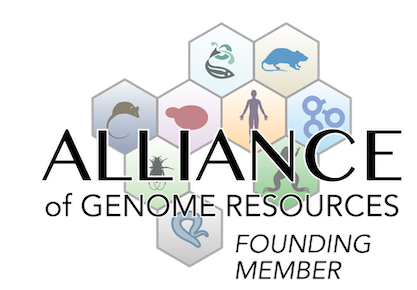nervous system
astrocytosis
(
J:371245
)
|
• reactive astrogliosis
|
|
• mice exhibit neuroinflammation indicated by increased GFAP- and IBA1-positive cells from 4 months of age that becomes pronounced by 9 months of age
|
|
• mice exhibit late-onset motor neuron disease, with mild disease progression without severe paralysis
• onset and progression of disease is similar to that seen in heterozygotes
• cerebral cortex, spinal cord, and muscles are all affected early
|
|
• mice exhibit progressive motor neuron degeneration by 4 months of age, with significant loss by 9 months of age; reduction in ChAT+ motor neurons in the anterior horn of the spinal cord which exhibit larger somas and fewer dendrites
|
|
• mice show early aggregates of mutant ANXA11 protein in the cytoplasm of spinal cord motor neurons at 2 months of age and in cortical neurons at 4 months of age
• ANXA11 protein aggregates co-localize with SQSTM1/p62-positive inclusions which are associated with oxidative stress and become increasingly prominent in spinal cord motor neurons
• mice exhibit TDP-43 proteinopathy, showing TDP-43 mislocalization in the anterior horn of the spinal cord and cortical neurons and show increased level of cytoplasmic TDP-43 and decreased level in the nucleus
• from 2 months of age, spinal motor neurons exhibit cytoplasmic TDP-43 inclusions around the nucleus, co-aggregating with mutant ANXA11 and by 9 months, nearly all TDP-43 has translocated to the cytoplasm, forming co-aggregates with ANXA11
|
|
• although mice show motor development from 4 to 10 months as indicated by increased CMAP, they show a decline in baseline-to-peak and peak-to-peak CAMP amplitudes, with a more pronounced decrease in hindlimbs than forelimbs
• a significant reduction in compound muscle action potentials (CMAP) is first seen in hindlimbs at around 4 months and in forelimbs at around 10 months
|
muscle
|
• myofibrillar disorganization, Z-disc dissolution, and subsarcolemmal autophagic material
• subsarcolemmal osmophilic structures and vacuoles are seen
• lipid and mitochondrial droplets are seen at the vacuole periphery
|
|
• Z-disc dissolution
|
|
• muscle dystrophy is not evident until 9 months of age
|
|
• gastrocnemius muscle exhibits grouped muscle atrophy
|
|
• electromyography indicates early neurogenic impairment with denervative potentials first detected in multiple skeletal muscles at 2 months, although compound muscle action potentials (CMAP) amplitudes remain normal at this time
• by 4 months of age, mice exhibit abundant fibrillations in deltoid muscle, positive sharp waves in the erector spinae muscle and gastrocnemius muscle, and spontaneous and giant motor unit potentials across muscles in multiple spinal cord segments
|
muscle spasm
(
J:371245
)
|
• paralysis is not seen up to 12 months of age, although occasional hindlimb spasms are seen
• spasms are more frequent than in heterozygous mice from 8-9 months onward
|
|
• mice exhibit inclusion body myopathy
• nuclear centralization, moth-eaten intermyofibrillar structures, and rimmed vacuoles with eosinophilic inclusions are seen
• at 2 months, fine particles of mutant ANXA11 protein in the sarcoplasm and sarcolemma are seen and by 4 months, particles progress to small aggregates co-localizing with TDP-43 inclusions
|
behavior/neurological
| N |
• mice exhibit intact working memory in the Y-maze and normal novelty discrimination
|
|
• mice show significant motor decline at 10 months of age
|
|
• mice show reduced limb stretching when suspended by the tail
|
|
• mice show decreased retention time on the rotarod test
|
|
• mice show a reduction in grip strength and shorter hanging endurance time
|
|
• reduction in spontaneous locomotor activity
|
homeostasis/metabolism
|
• autophagy initiation marker Beclin-1 and autophagosome formation marker LC3 are normal at 2 months but progressively decrease thereafter and the autophagy degradation marker p62 shows progressive accumulation indicating impaired autophagy
• by 9 months of age, mice show more neurons and muscle cells with cytosolic p62- and ANXA11+ inclusions indicating loss of autophagic compensation
|
immune system
|
• mice exhibit neuroinflammation indicated by increased GFAP- and IBA1-positive cells from 4 months of age that becomes pronounced by 9 months of age
|
cellular
astrocytosis
(
J:371245
)
|
• reactive astrogliosis
|
|
• autophagy initiation marker Beclin-1 and autophagosome formation marker LC3 are normal at 2 months but progressively decrease thereafter and the autophagy degradation marker p62 shows progressive accumulation indicating impaired autophagy
• by 9 months of age, mice show more neurons and muscle cells with cytosolic p62- and ANXA11+ inclusions indicating loss of autophagic compensation
|
Mouse Models of Human Disease |
DO ID | OMIM ID(s) | Ref(s) | |
| amyotrophic lateral sclerosis type 23 | DOID:0080225 |
OMIM:617839 |
J:371245 | |



 Analysis Tools
Analysis Tools